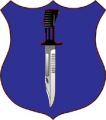First off, I've spent the last couple weeks reading many of the threads on this forum to ensure I've got a grasp of the debates and discussions that have already taken place. This is an impressive site with a high-level of discourse taking place.
I'm starting this thread as opposed to continuing the discussion from where it came from to avoid sidetracking its pages of discussion on strategy. My question revolves around these statements:
There is alot of focus on how to optimize unit organization in some of these threads, but I have a feeling that organization takes backseat to training. Now, I've read the idea of PBID and such things as Wagram's ideas on training but I've yet to get a sense for the specifics that many are advocating as solutions to the problems alluded to above. Are our training systems "barely post-conscript" (to quote Mr Owen)? If so, what about them is archaic? What constitutes "the basics" that would constitute effective training for a capable soldier and how should it be taught?













Bookmarks